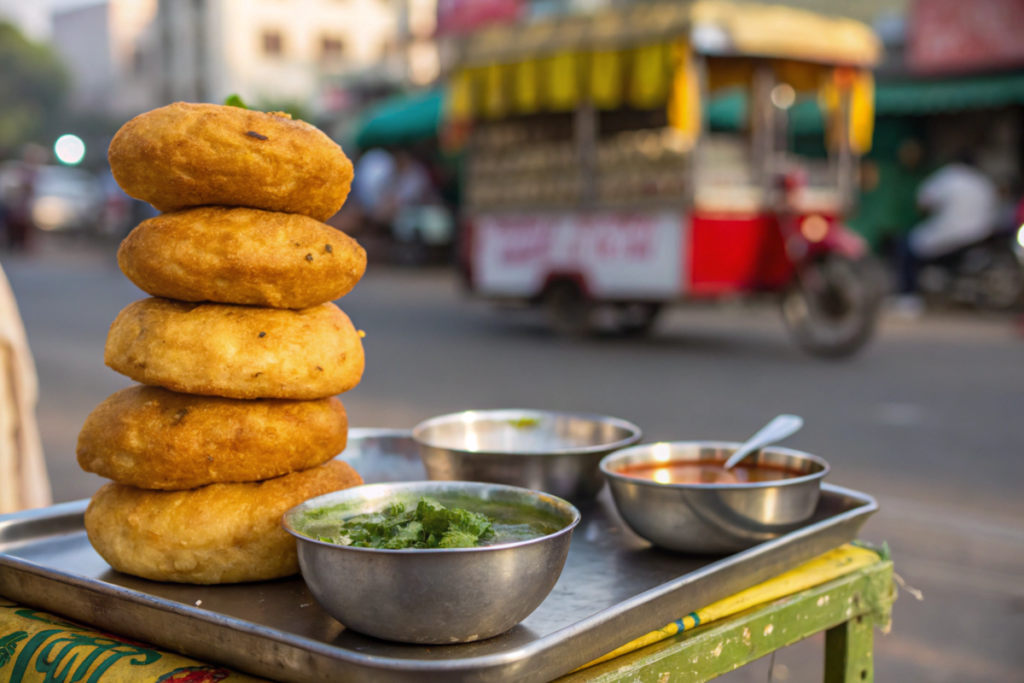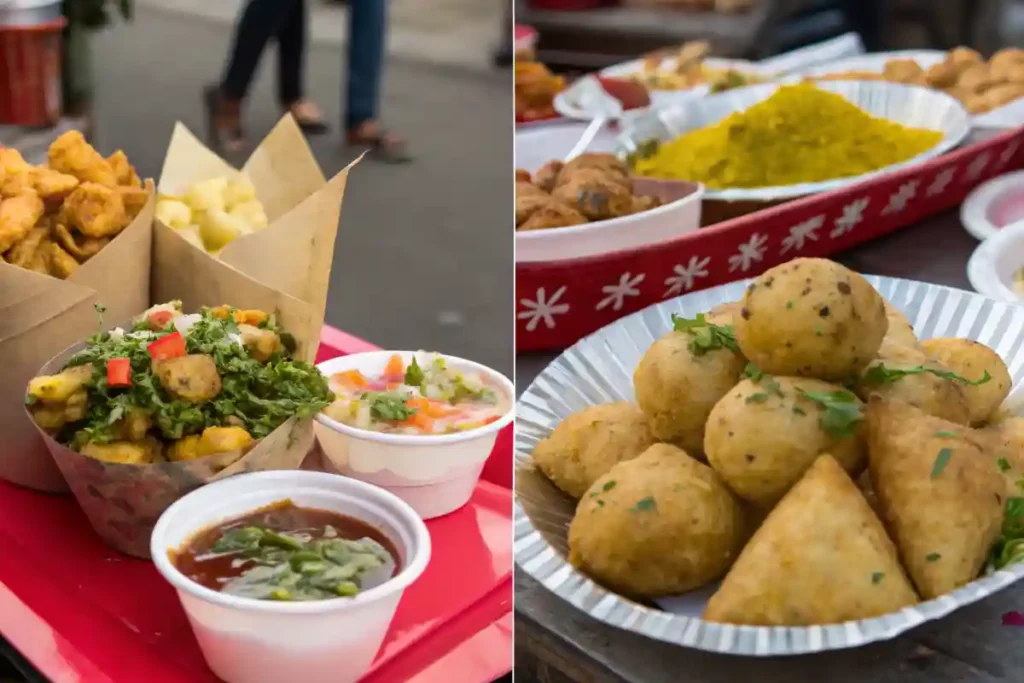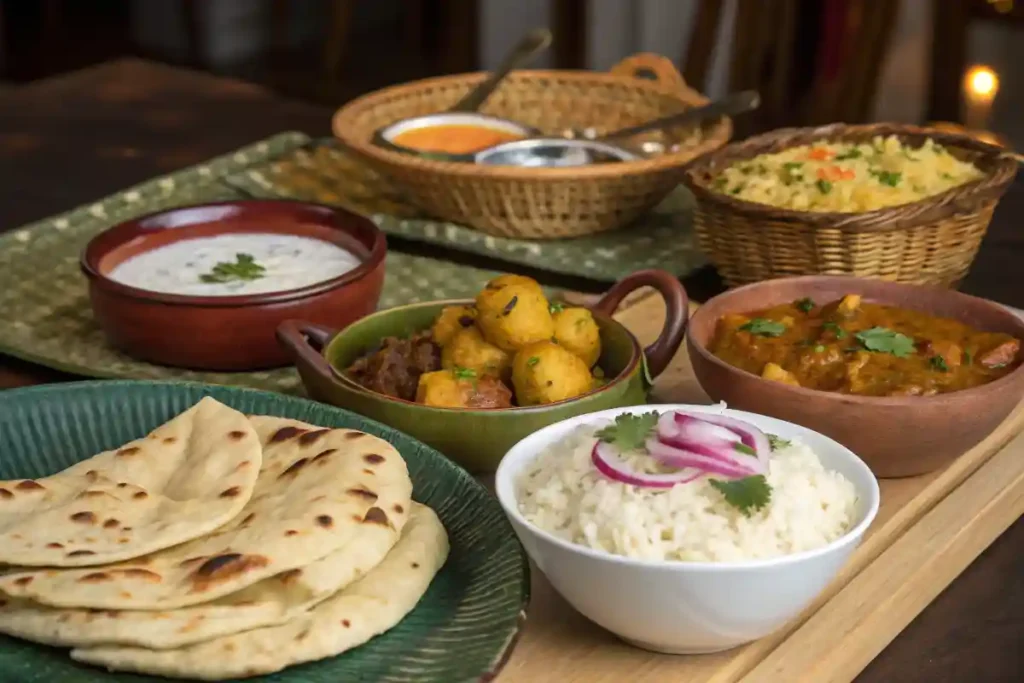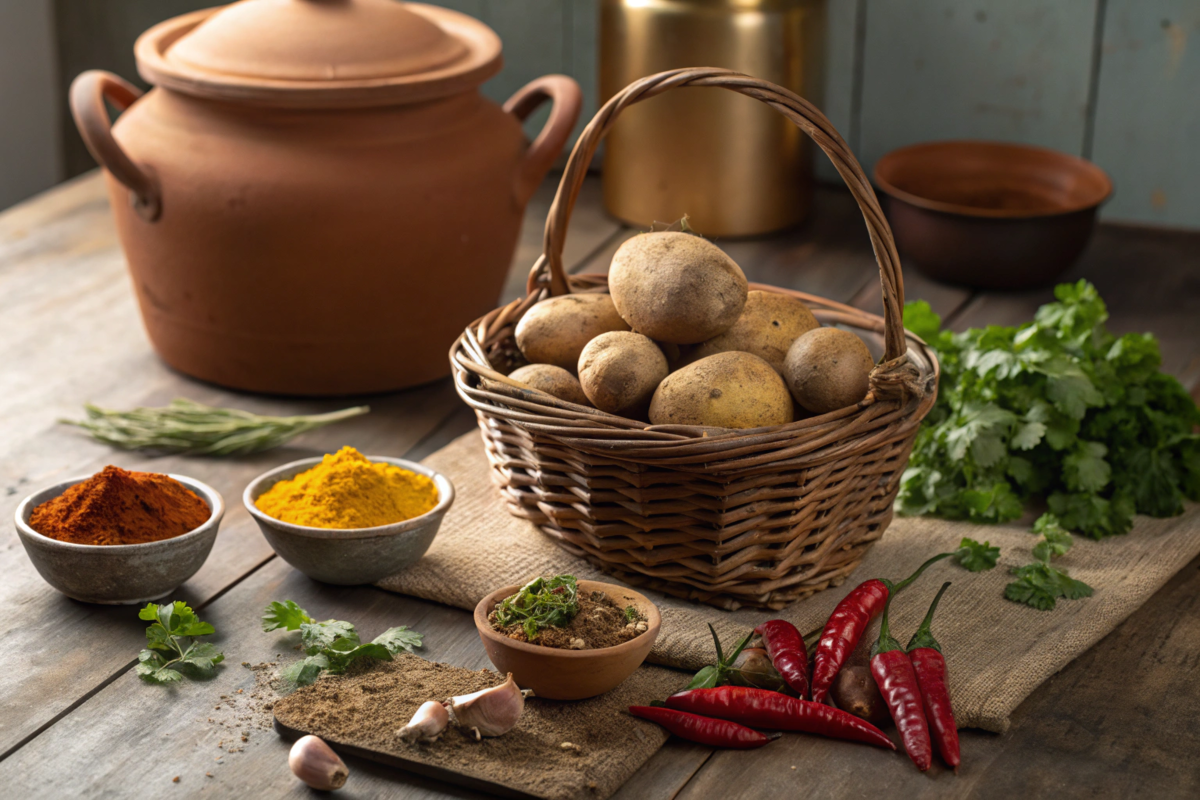Potatoes hold an undeniable presence in Indian cooking. Their versatility, affordability, and taste make them an essential part of the cuisine. But what do people call potatoes in Indian cooking? Commonly known as aloo or batata, potatoes have become deeply integrated into regional dishes, cultural traditions, and even linguistic nuances. This article explores their history, culinary importance, regional names, and more, celebrating this humble yet beloved ingredient.
Understanding the Role of Potatoes in Indian Cuisine
Although not native to India, potatoes have become a staple ingredient in Indian households. Centuries ago, traders introduced this tuber to the country, and it quickly became a key part of the cuisine. Potatoes now add texture and depth to dishes across the nation.
Indian cooks use potatoes in a variety of ways—frying, boiling, baking, or mashing—to create countless recipes. Their ability to soak up flavors makes them the perfect partner for spices like cumin, turmeric, and coriander. Whether featured in a tangy curry, crispy fritter, or hearty vegetable medley, potatoes often take center stage. For inspiration, explore our detailed guides on Indian spice blends and vegetarian recipes to bring your potato dishes to life.
Beyond their nutritional value, potatoes hold cultural importance. They feature prominently in festive meals and symbolic rituals, becoming ingrained in Indian traditions. From everyday meals to celebratory feasts, potatoes provide both sustenance and emotional connection.
In Maharashtra, people call potatoes batata, while in North India, they are known as aloo. Across the country, potatoes stand out for their versatility, reflecting the unique interplay of food, culture, and language in India.
Nomenclature and Terminology
The name for potatoes in Indian cooking varies by region. In northern India, people commonly use the term aloo, which derives from the Persian word ālu. The Mughal rulers introduced this word during their reign, leaving a lasting impact on the culinary lexicon.
In western India, states like Maharashtra and Gujarat call potatoes batata. This term traces its roots to Portuguese traders, who brought potatoes to India in the 16th century. These regional names highlight the influence of both colonial history and local linguistic adaptations.
Different states celebrate potatoes with unique names and dishes. In Bengal, locals call potatoes alu and use them in dishes like alu posto. Tamil Nadu refers to them as urulaikizhangu, and Kerala calls them urulakizhangu. In Punjab, the popularity of aloo paratha showcases the northern love for potatoes, while Maharashtra’s batata vada reflects its western culinary heritage.
These names go beyond linguistic diversity. They illustrate the journey of potatoes as they adapted to regional cuisines, weaving themselves into the culinary traditions and cultural stories of India.
Historical Context
Potatoes arrived in India during the 16th century, brought by Portuguese traders. Originating in the Andes, potatoes traveled through Europe via the Columbian Exchange before reaching Indian shores. Initially, locals viewed them as an exotic crop, unfamiliar to their diets. Over time, they adapted potatoes into various regional dishes, showcasing their versatility and ability to complement traditional Indian flavors.
Over time, Indian farmers began cultivating potatoes, taking advantage of the crop’s adaptability to diverse climates. High-altitude regions like the Himalayas and fertile plains both proved ideal for potato farming. As potatoes became more accessible, they entered Indian kitchens, where they were embraced wholeheartedly.
Indian cooks quickly recognized the potato’s ability to absorb spices, making it a natural fit for local dishes. By the 18th century, potatoes had shed their status as an unfamiliar import and become a beloved part of daily meals and street foods.
The Evolution of Potato Usage in Indian Cuisine
Initially, potatoes served as a colonial crop, grown to support European settlers in India. Gradually, Indian chefs began incorporating them into regional recipes. Once a neutral filler, potatoes soon evolved into the star ingredient of countless iconic dishes.
Recipes like aloo gobi (potatoes and cauliflower) and aloo tikki (spiced potato patties) demonstrate the creativity of Indian cooks. These dishes showcase the potato’s ability to enhance the flavors of local vegetables and spices.
Today, potatoes symbolize culinary innovation in India. Their journey from a colonial introduction to a cherished staple reflects the country’s talent for blending foreign influences with local traditions. Potatoes continue to play a central role in India’s diverse culinary identity.
Culinary Applications
Indian cuisine celebrates the potato’s adaptability in countless ways. From rural kitchens to bustling city streets, this versatile ingredient transforms into iconic dishes like Aloo Gobi, Dum Aloo, and Batata Vada.
- Aloo Gobi: This classic vegetarian dish combines potatoes (aloo) with cauliflower (gobi) and a blend of spices like turmeric and cumin. Its simple preparation and robust flavor make it a household favorite.
- Dum Aloo: Originating in Kashmir, this dish elevates potatoes with a rich, slow-cooked yogurt-based gravy. The “dum” technique ensures the flavors meld beautifully, creating a luxurious meal often reserved for special occasions.
- Batata Vada: This street-food classic features mashed, spiced potatoes coated in chickpea flour batter and deep-fried to perfection. Often paired with bread as vada pav, it exemplifies the vibrancy of Mumbai’s food culture.
These dishes highlight the potato’s ability to enhance flavors, textures, and traditions, cementing its place in Indian cuisine.
Nutritional Significance batata in Indian dishes
Potatoes are often underestimated when it comes to their nutritional profile, but they are a powerhouse of essential nutrients. Packed with complex carbohydrates, they provide a steady source of energy, making them a staple in many Indian meals. Additionally, potatoes are rich in dietary fiber, which aids in digestion and supports gut health. They are also a good source of vitamin C, potassium, and B vitamins, contributing to immunity, heart health, and energy metabolism. Learn more about how to incorporate potatoes into a balanced diet.
In Indian cooking, potatoes are often paired with other nutrient-dense ingredients like spinach (aloo palak), peas (aloo matar), and lentils. This ensures that meals are balanced, offering a mix of macronutrients and micronutrients. The use of spices like turmeric, which has anti-inflammatory properties, further enhances the health benefits of potato-based dishes. When consumed in moderation and as part of a well-rounded diet, potatoes can be a nutritious addition to daily meals.
Health Misconceptions About Potatoes
Despite their benefits, potatoes have gained a reputation for being calorie-dense and unhealthy. However, this misconception often arises from cooking methods like deep-frying, which significantly increases their calorie content. Boiled, steamed, or roasted potatoes retain their nutritional value and are low in fat.
In Indian cuisine, techniques like dry sautéing or pressure cooking help preserve the natural goodness of potatoes without adding unnecessary fats. Choosing these healthier preparations can help dispel the myth that potatoes are inherently fattening. Instead, they should be recognized as a nutrient-rich, versatile ingredient that complements a variety of diets when prepared thoughtfully.
Cultural Significance potato in Hindi cooking
Potatoes hold a special place in Indian festivals and celebrations, often finding their way into festive meals as a symbol of abundance and nourishment. During Diwali, for example, potatoes feature prominently in snacks like aloo chaat and batata vada, offering a flavorful and festive touch to gatherings. In Navratri, when many individuals observe fasting, dishes like aloo ki sabzi (potato curry) are prepared without onions or garlic, making them suitable for the occasion while still being delicious and satisfying.
Potatoes are also a staple during community feasts and religious events, as they can easily be cooked in large quantities and paired with simple breads like puri or paratha. Their ability to blend seamlessly with a variety of ingredients and spices makes them a dependable choice for celebratory meals across the country.

The Symbolism of Potatoes in Indian Culture
Beyond their culinary uses, potatoes are often seen as a food of the masses, representing affordability and inclusivity. Their versatility ensures they can cater to a variety of tastes and dietary preferences, making them accessible to people from all walks of life.
In Indian culture, the potato’s adaptability mirrors the nation’s spirit of unity in diversity. Whether in a humble rural kitchen or a luxurious banquet, potatoes hold a universal appeal. Their presence in everyday meals and special occasions alike underscores their status as a food that nourishes both body and soul, bridging cultural and social divides.
Agricultural Aspects potato in Hindi cooking
India ranks as one of the world’s largest potato producers, with farmers actively cultivating this staple crop across vast agricultural landscapes. Potatoes thrive in regions like Uttar Pradesh, West Bengal, and Bihar, where farmers lead the nation in production. Farmers in Uttar Pradesh alone generate nearly one-third of the country’s total potato output, leveraging the state’s fertile soils and favorable climate.
Potatoes play a vital role in driving India’s agricultural economy. They provide livelihoods for millions of farmers and workers involved in farming, processing, and distribution. This high-yield crop bolsters food security by maintaining a steady supply for domestic consumption and export. Additionally, potatoes power the processed food industry, serving as the foundation for products like potato chips and frozen fries.
Challenges and Innovations in Potato Farming
Potato farming in India faces several challenges, including erratic weather patterns, limited irrigation facilities, and vulnerability to pests like the potato tuber moth. Water management is particularly crucial, as potatoes require consistent irrigation during their growth cycle.
Innovations in farming practices, however, are helping mitigate these issues. Techniques like drip irrigation and sprinkler systems optimize water usage, while integrated pest management (IPM) reduces reliance on chemical pesticides. Improved seed varieties resistant to diseases like late blight are also being developed, enhancing both yield and quality.
With a growing focus on sustainability and modernization, potato farming in India continues to evolve, ensuring this staple crop remains a cornerstone of the nation’s agricultural landscape.
Linguistic Insights
Cultural and colonial influences have shaped the rich linguistic histories of the terms “Aloo” and “Batata” in Indian cooking. People in northern India commonly use the word “aloo”, which originates from the Persian word “ālu”. Initially, ālu referred to fruits like plums, but over time, communities expanded its meaning to include potatoes. This linguistic evolution highlights the significant role Persian-speaking Mughal rulers played in shaping India’s cultural and culinary traditions.
In contrast, “batata”, widely used in Maharashtra and Gujarat, comes from Portuguese. Portuguese traders brought potatoes to India in the 16th century, integrating their language into local dialects. During the British colonial period, Indians increasingly added potatoes to their diets, which reinforced the usage of these terms. Although British English did not directly influence these names, it played a major role in spreading the crop throughout the subcontinent.

Evolution of Terms in Modern Indian Cooking
In today’s Indian cooking, the terms “aloo” and “batata” signify more than just linguistic diversity—they reflect regional identities. North Indians might savor aloo paratha for breakfast, while Maharashtrians enjoy their beloved batata vada as a street snack.
These words have also transcended their original culinary contexts to become symbols of cultural pride. For example, aloo is frequently used in everyday expressions, while batata carries an endearing familiarity in western India. Together, they showcase India’s ability to integrate global influences while preserving regional uniqueness.
Global Influence
Indian potato dishes have transcended geographical boundaries, finding a beloved place on plates across the globe. Indian restaurants in countries like the United States, the United Kingdom, and Australia often feature iconic potato-based dishes such as aloo gobi and dum aloo, introducing international diners to the rich flavors of Indian cuisine. The simplicity and adaptability of these dishes make them a hit in diverse culinary settings, appealing to palates worldwide.
The global embrace of Indian potato dishes isn’t limited to traditional recipes. They have inspired creative interpretations in fusion cuisine, where chefs merge Indian flavors with local culinary styles. These dishes demonstrate the universal appeal of Indian spices and the potato’s ability to complement various ingredients, proving its versatility beyond the subcontinent.
Examples of Fusion Dishes

Fusion recipes, like potato samosas stuffed with cheese and jalapeños or aloo tikki burgers, reflect the adaptability of Indian cooking styles. These dishes cater to modern tastes while retaining their Indian essence, making them favorites in multicultural food scenes.
Another example is curried potato fries, where crispy potato sticks are seasoned with Indian spices like cumin and chaat masala. These creative twists show how Indian flavors continue to inspire global gastronomy, bridging cultures through food.
Conclusion
The humble potato has firmly established itself as a cornerstone of Indian cooking, earning a place of honor in both everyday meals and grand feasts. Its versatility in absorbing flavors, nutritional value, and affordability has made it indispensable to Indian households. From North India’s beloved aloo paratha to Maharashtra’s batata vada, potatoes are celebrated across the country for their ability to blend seamlessly with diverse culinary traditions.
So, what is a potato called in Indian cooking? It’s more than just aloo or batata—it’s a symbol of India’s cultural richness, a provider of sustenance, and a canvas for endless culinary creativity. The enduring legacy of potatoes in Indian cuisine continues to inspire innovation, bridging the gap between traditional recipes and global tastes.
Frequently Asked Questions (FAQs)
What is the Hindi term for potato?
In Hindi, the potato is called aloo. This term is widely used across northern India and is one of the most recognized names for potatoes in Indian cuisine.
How did potatoes become popular in Indian cuisine?
Potatoes were introduced to India by Portuguese traders in the 16th century. Over time, Indian farmers cultivated them widely, and local cooks adapted them into traditional recipes, making them a staple ingredient.
What are some traditional Indian potato dishes?
Popular potato dishes include aloo gobi (potato and cauliflower), dum aloo (a rich potato curry), and batata vada (fried potato balls). These dishes highlight the versatility of potatoes in Indian cuisine.
Are there regional names for potatoes in India?
Yes, potatoes are called batata in Marathi and Gujarati, alu in Bengali, and urulaikizhangu in Tamil. Each region has its own term for this widely loved ingredient.
What is the nutritional value of potatoes in Indian diets?
Potatoes are rich in carbohydrates, providing energy. They also contain dietary fiber, potassium, and vitamin C, making them a nutritious choice when consumed in moderation.
How are potatoes used in Indian festivals?
During festivals like Diwali and Navratri, potato-based dishes such as aloo chaat and aloo ki sabzi are commonly prepared, symbolizing abundance and offering flavorful vegetarian options.

